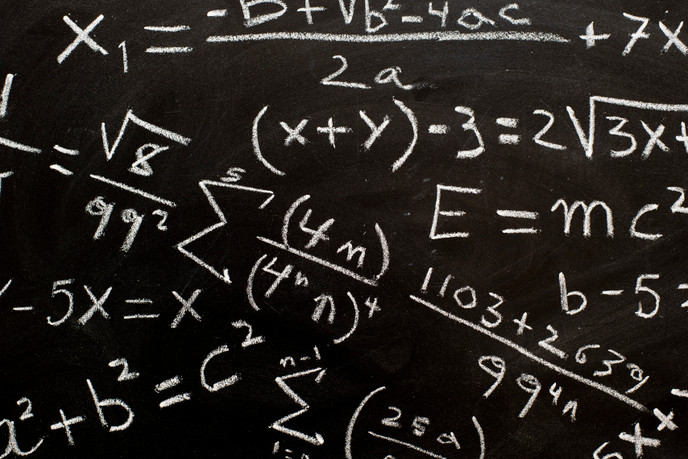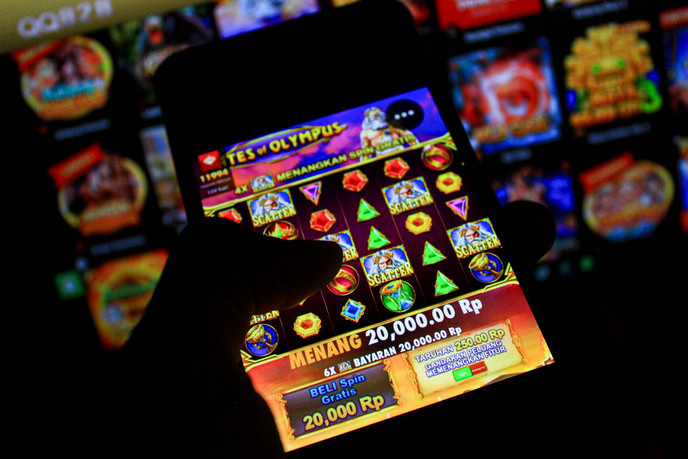- Number 1: RTP is a fixed return percentage, meaning there’s no chance to win more
- Number 2: RTP shows exactly how much you’ll win in every session
- Number 3: RTP guarantees that the casino always wins, and players always lose
- Number 4: the higher your bet, the higher the RTP
- Number 5: you can “beat” RTP by playing at the right time
- Number 6: if a slot has recently paid out a big win, it won’t hit again anytime soon
- Number 7: RTP doesn’t matter if a slot has great bonuses
- Number 8: RTP is the same across all online casinos
8 common RTP myths busted
- Georgia Banks Video Presenter
Hello and welcome to FIRST.com, where we’re going to be taking you through some of the biggest misconceptions about RTP, which can potentially lead you to miss out on big wins.
But before we dive into today's video, I’m letting you in on a little secret we’ve been keeping here at FIRST. Our expectations have created our very own RTP comparison page, where you can look at the BEST RTP percentages for our affiliate games, and the best part? They’re all on one page, so you don't have to spend hours searching the internet. Make sure you check it out by clicking the link in the description below.
By the end of this video, you’ll know how to increase your chances of winning and maybe even how to hit the jackpot.
Right, let's get into our RTP myths!
Number 1: RTP is a fixed return percentage, meaning there’s no chance to win more
For example, if an RTP is ninety eight percent, it supposedly means that a player is guaranteed to lose two percent, a myth.
In reality, you could either lose two percent or win far more than your bankroll. RTP is a long-term average, not a limit on your potential wins!
If you want to understand deeply, what RTP in casino games is, stay with FIRST – here you can find everything about iGaming!
Number 2: RTP shows exactly how much you’ll win in every session
Not at all! If a game has ninety-six percent RTP, this percentage applies over millions of spins — an important point to understand when considering RTP meaning in gambling: how to choose the right casino games.
Number 3: RTP guarantees that the casino always wins, and players always lose
RTP is simply the average return to players over time. Yes, some players may lose, but others will hit big wins and jackpots. The casino makes money in the long run, but your individual results can vary massively.
One often-held belief is who can influence the RTP. Actually, the game developer sets RTP during the development of the game; it is derived from long-term statistical computations. Land-based and regulated online casinos are not permitted to change the RTP of particular games outside specified limits. Any modifications to RTP in licensed countries have to be evaluated and verified by unbiased labs and notified to gaming authorities.
This guarantees equity and helps to stop casinos from controlling results to suit them. Although the RTP cannot be changed by players, knowledge of it will enable them to choose which games to play with greater wisdom.
Number 4: the higher your bet, the higher the RTP
RTP doesn’t change based on your bet size. However, one thing is true: bigger bets can unlock jackpots and bigger bonuses, increasing your potential payouts.
When it comes to understanding who does the RTP really matter for, the answer is primarily players — especially those who play frequently or over extended periods. A common myth is that increasing your bet will boost your RTP, but that’s simply not how it works.
RTP, or Return to Player, is a theoretical percentage calculated over millions of game rounds and remains consistent regardless of whether you're wagering the minimum or the maximum. While casual players might not notice the impact, for regular players, even a small difference in RTP can affect long-term results.
So, rather than betting higher to chase better odds, smart players focus on choosing games with higher RTP from the start.
Number 5: you can “beat” RTP by playing at the right time
A common misconception is that playing at certain times of day or when fewer players are online can somehow boost your chances.
This often leads to the question: how does RTP work casino?
In truth, RTP — Return to Player — is a long-term statistical average set by the game’s design and driven by a random number generator (RNG). It doesn’t “build up” or “payout” on a schedule. Each spin or round is completely independent. The time of day and the number of players online have no impact on RTP.
What really matters is your strategy.
Number 6: if a slot has recently paid out a big win, it won’t hit again anytime soon
In fact, spins are independent of each other. Each new spin is a new chance to win. Yes, you got it right! The jackpot can even hit twice in a row!
Number 7: RTP doesn’t matter if a slot has great bonuses
Bonus rounds can increase your chances of winning, but they still depend on RTP. A slot with a high RTP and bonus features can lead to the biggest potential payouts!
Players often wonder, how do online casinos apply RTP to games?
The answer is that casinos don’t set the RTP themselves — it’s determined by the game developer and built into the game’s code. Casinos may choose from different certified RTP versions when offering a game, but once selected, that RTP remains fixed during gameplay. All versions must be tested and approved by regulators to ensure fairness.
So, even with flashy bonuses, the core return potential still comes down to the slot’s underlying RTP.
Number 8: RTP is the same across all online casinos
The same slot can have different RTPs at different casinos because some providers allow operators to adjust RTP settings.
This leads many players to ask, how do I know the RTP is correct as stated? The most reliable way is to play at licensed and regulated casinos, where games are regularly audited by independent testing labs. These labs verify that the actual gameplay matches the advertised RTP. You can also check the game’s info screen or paytable, where the RTP is usually disclosed. If it’s not visible, that’s often a red flag.
Transparency and licensing are key to ensuring the RTP you see is the one you actually get.
Understanding RTP, Volatility, Variance, and House Edge: What’s the Difference?
When exploring casino games, especially slots, players often come across terms like RTP, volatility, variance, and house edge. While they all relate to how a game behaves and what players can expect, each concept means something different and understanding these differences can help you make smarter gaming choices.
How is RTP different from volatility?
RTP (Return to Player) is a percentage that indicates how much money a game pays back to players over a very long period—typically millions of spins or rounds. For example, a slot with an RTP of 96% means that, on average, players get back 96 units for every 100 units wagered. However, RTP doesn’t tell you about the size or frequency of wins during shorter play sessions. That’s where volatility comes in.
Volatility (sometimes called variance) describes the risk level of a game and how often and how big the wins tend to be. High volatility games pay out larger wins but less frequently, meaning you might experience longer losing streaks but bigger jackpots when you win. Low volatility games offer more frequent but smaller wins, providing a steadier, less risky experience.
Example: Imagine two slots, both with an RTP of 96%. Slot A is low volatility and pays out small wins regularly, like winning a few coins every 10–15 spins. Slot B is high volatility, rarely paying out anything but occasionally awarding a huge jackpot that compensates for many losses. Both average 96% over millions of spins, but your experience while playing each will be very different.
RTP and Variance
Variance is another term used interchangeably with volatility. Both refer to the distribution and unpredictability of wins within a game session. While RTP sets the long-term expected payout, variance affects the short-term player experience. A game with high RTP but high volatility might feel very different to play than a low RTP, low volatility game.
The difference between house edge and return to player
House edge and RTP are two sides of the same coin. RTP reflects the percentage of all wagered money that is paid back to players over time, while house edge is the percentage that the casino expects to keep. For example, if a game has an RTP of 96%, the house edge is 4%. This means the casino, on average, profits 4 units for every 100 wagered.
Example: In roulette, the house edge on a European wheel is about 2.7%, meaning the RTP is roughly 97.3%. If you bet $100, you can expect to get back around $97.30 in the long run, while the casino keeps $2.70.
The difference between volatility and return to player
Simply put, RTP measures how much you can expect to get back in the long run, while volatility describes how those returns are distributed over time. High volatility can mean big swings in your bankroll, whereas RTP remains constant as a theoretical average.
Example: A high volatility slot might take your bankroll down significantly in the short term but then pay out a big win that brings you back close to or above your starting amount. A low volatility slot might slowly increase your bankroll over time with small, frequent wins, but without the excitement of big jackpots.
RTP in American vs European Roulette and Online Blackjack
When it comes to casino games, understanding RTP (Return to Player) helps you gauge how much you can expect to win back over time. However, RTP varies significantly between different games and even between variations of the same game. In this section, we’ll compare the RTP of American and European roulette, as well as explore what to expect when playing blackjack online.
RTP in American Roulette
American Roulette features 38 pockets: numbers 1 to 36, plus 0 and 00 (double zero). Because of the extra 00, the house edge is higher compared to European Roulette. The RTP in American Roulette is approximately 94.74%, meaning players can expect to get back about 94.74 units for every 100 wagered over the long term. This lower RTP reflects the increased advantage the casino holds due to the extra zero.
RTP in European Roulette
European Roulette has only one zero pocket, making a total of 37 pockets. This single zero lowers the house edge, resulting in a higher RTP of around 97.30%. In other words, players receive back approximately 97.3 units for every 100 wagered over time. This difference of nearly 2.5% RTP means European Roulette is generally more favorable for players.
Example: If you bet $100 on American Roulette, statistically, you’d get back about $94.74 in the long run. The same bet on European Roulette would return around $97.30 on average.
| Game | Number of Pockets | House Edge (%) | RTP (%) |
|---|---|---|---|
| American Roulette | 38 (0, 00 + 1–36) | 5.26% | 94.74% |
| European Roulette | 37 (0 + 1–36) | 2.70% | 97.30% |
What RTP Can You Expect When Playing Blackjack Online?
Blackjack is unique among casino games because your skill and strategy can heavily influence the RTP. While the house always has an edge, with perfect basic strategy, blackjack’s RTP can reach 99% to 99.5%, making it one of the fairest casino games.
Key factors affecting online blackjack RTP include:
- Number of decks used (fewer decks usually increase RTP)
- Dealer rules, such as whether the dealer hits or stands on soft 17
- Availability of options like surrender, doubling down, and splitting
Without optimal strategy, players’ RTP will be noticeably lower.
| Factor | Effect on RTP |
|---|---|
| Number of Decks | Fewer decks → higher RTP |
| Dealer Hits Soft 17 | RTP slightly lower |
| Double Down Rules | More liberal rules → higher RTP |
| Surrender Allowed | Increases RTP |
| Perfect Basic Strategy | Maximizes RTP |
💡 Tip: Check game rules and use basic strategy charts to maximize your RTP when playing blackjack online.
Hopefully now you feel more confident in your knowledge in RTP. Don’t forget, if you want to find the games with the highest RTP selected by our experts, click the link in the description below.






 Chaos theory - can it really be used to beat the house?
Chaos theory - can it really be used to beat the house?
 What AI is really doing to online casinos
What AI is really doing to online casinos
 15 rookie casino mistakes I’ll never make again
15 rookie casino mistakes I’ll never make again
